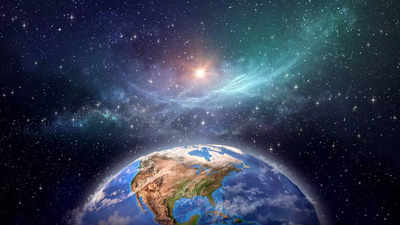- News
- Science News
- Does the James Webb Space Telescope hold the key to life on other planets? Read on to find out more
Does the James Webb Space Telescope hold the key to life on other planets? Read on to find out more
The James Webb Space Telescope is set to observe K2-18b, a potentially habitable exoplanet with unique gases in its atmosphere, aiming to unravel extraterrestrial life mysteries.

The James Webb Space Telescope (JWST) is gearing up for a groundbreaking observation campaign aimed at unravelling the mysteries of extraterrestrial life. According to a report by The Times, the telescope is set to focus its gaze on K2-18b, a distant exoplanet orbiting a red dwarf star located 124 light-years away.
K2-18b has piqued the interest of scientists due to its potential habitability, believed to be a world dominated by vast oceans and boasting a size 2.6 times larger than Earth.Of particular intrigue is the presence of dimethyl sulphide (DMS) in its atmosphere, a gas deemed by NASA to be "uniquely produced by life," notably marine phytoplankton.
The vast distance to K2-18b poses a significant technological challenge, with a probe travelling at the speed of the Voyager spacecraft (38,000 mph) requiring a staggering 2.2 million years to reach the planet. Nevertheless, the JWST's ability to analyse a planet's atmosphere's chemical composition through spectral analysis of starlight passing through its clouds offers a promising outlook on the potential for life beyond Earth. This mission could potentially provide an answer to the age-old question of whether life exists elsewhere in the universe.
The forthcoming observations also seek to elucidate the presence of methane and carbon dioxide in K2-18b's atmosphere, potentially resolving the long-standing "missing methane problem" that has perplexed scientists for over a decade. While theoretical work on non-biological sources for these gases continues, definitive conclusions are anticipated within the next four to six months.
James Webb Space Telescope: Exploring the potential habitability of K2-18b
K2-18b has piqued the interest of scientists due to its potential habitability, believed to be a world dominated by vast oceans and boasting a size 2.6 times larger than Earth.Of particular intrigue is the presence of dimethyl sulphide (DMS) in its atmosphere, a gas deemed by NASA to be "uniquely produced by life," notably marine phytoplankton.
Caution against premature conclusions
While the detection of DMS in K2-18b's atmosphere would mark a groundbreaking discovery, Dr. Nikku Madhusudhan, the study's lead astrophysicist from Cambridge, advises exercising caution against premature conclusions. Although initial data from JWST suggests a probability of over 50% for DMS presence, further analysis is imperative. The telescope is slated for an eight-hour observation session this Friday, with extensive data processing required before arriving at a definitive conclusion.
Technological challenges and hopeful outlook
The vast distance to K2-18b poses a significant technological challenge, with a probe travelling at the speed of the Voyager spacecraft (38,000 mph) requiring a staggering 2.2 million years to reach the planet. Nevertheless, the JWST's ability to analyse a planet's atmosphere's chemical composition through spectral analysis of starlight passing through its clouds offers a promising outlook on the potential for life beyond Earth. This mission could potentially provide an answer to the age-old question of whether life exists elsewhere in the universe.
Seeking to resolve the ‘Missing Methane Problem’
The forthcoming observations also seek to elucidate the presence of methane and carbon dioxide in K2-18b's atmosphere, potentially resolving the long-standing "missing methane problem" that has perplexed scientists for over a decade. While theoretical work on non-biological sources for these gases continues, definitive conclusions are anticipated within the next four to six months.
End of Article
FOLLOW US ON SOCIAL MEDIA
